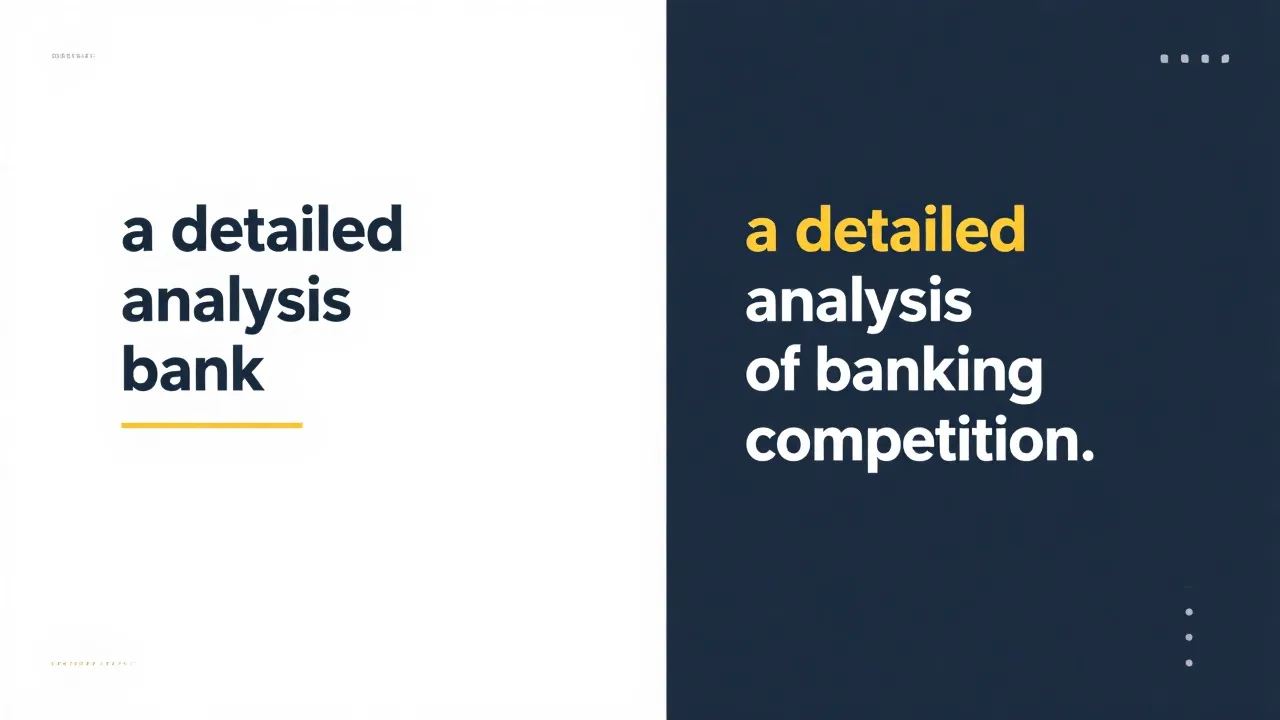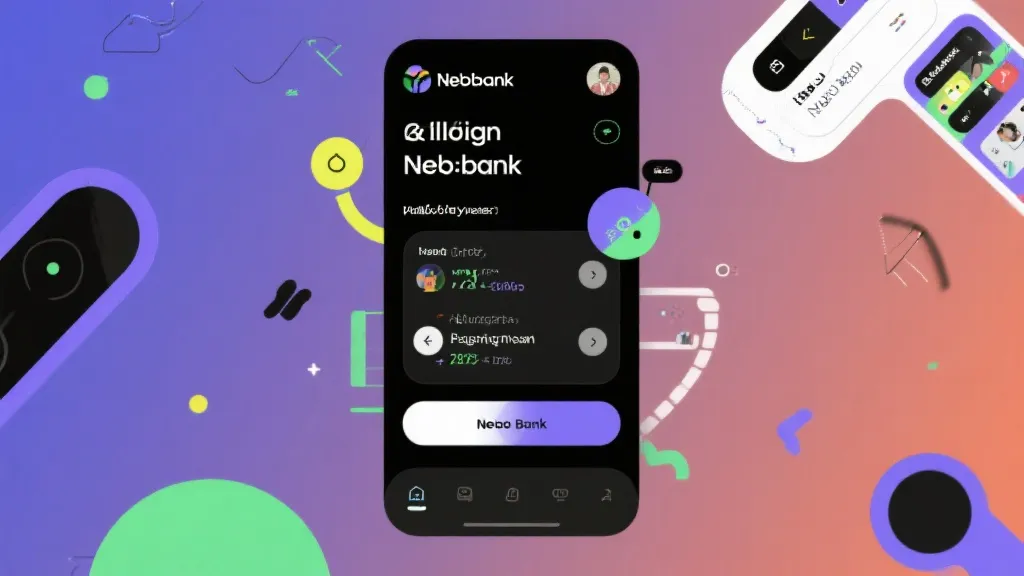The evolving landscape of the financial sector prompts close scrutiny of Webbank and its competitors. As digital transformation reshapes banking, understanding competitors' strategies and positioning enables a comprehensive view of market dynamics. This article explores Webbank's rivals, evaluating their strengths, weaknesses, and unique value propositions to capture insights into effective business navigation in the finance industry.

In the rapidly evolving financial sector, understanding the competitive landscape is crucial for any player aiming to maintain or enhance its market position. Webbank, like many digital financial services institutions, faces a dynamic array of competitors. These range from traditional brick-and-mortar banks to innovative tech-driven startups that are redefining how banking services are delivered. This article delves into the core areas where Webbank meets its competition, offering a comprehensive analysis aimed at industry insiders seeking deeper insights.
Webbank's competitors can be categorized into several groups, each with distinct advantages and market focus. Prominent among these are traditional banks, online-direct banks, and fintech startups. Each category has particular strengths that pose different challenges and opportunities for Webbank.
| Category | Prominent Competitors | Key Strengths |
|---|---|---|
| Traditional Banks | Wells Fargo, Bank of America, JPMorgan Chase | Established trust, wide range of services, extensive physical presence |
| Online-Direct Banks | Ally Bank, Discover Bank | Lower operational costs, attractive interest rates, reduced fees |
| Fintech Startups | Chime, SoFi, Robinhood | Innovative services, personalized experiences, agility |
The competitive dynamics in the finance industry hinge on several factors. Digital adoption is probably the very significant driver of change, influencing both consumer behavior and industry practices. Customers increasingly demand convenience, personalization, and speed, areas where digital-first entities excel. Traditional banks, recognizing the need to compete on these fronts, are investing heavily in technology and partnerships to bolster their digital offerings.
Another noteworthy trend is the rise of integrated financial platforms that merge banking, investment, and financial advice into single user experiences. Players who can effectively leverage data analytics and open banking technologies to provide tailored solutions will likely emerge as sector leaders. This integration allows providers to attract and retain customers by offering comprehensive solutions that meet a diverse range of financial needs.
Moreover, as sustainability becomes a critical issue for consumers, many banks are now emphasizing green finance initiatives. Webbank could leverage this trend by promoting eco-friendly financial products or investing in green technology projects, appealing to the growing consumer base that prioritizes environmental responsibility.
Technology continues to reshape the competitive landscape in the banking sector. The advent of artificial intelligence (AI) and machine learning allows banks to analyze consumer behavior more efficiently and develop predictive models that inform product offerings. Webbank has the opportunity to utilize these technologies to customize user experiences and provide real-time responses to customer queries. With chatbots and algorithms designed to handle requests more efficiently, Webbank can enhance customer satisfaction and reduce operational costs.
Additionally, security has become a paramount concern in the financial sector. Cybersecurity threats are increasing in frequency and sophistication, necessitating that banks invest significantly in protecting sensitive customer information. Webbank must continuously evolve its security measures, implementing best practices and adopting new technologies to ensure customer data safety. This commitment to protecting consumer information can itself be a differentiator, building trust and brand loyalty.
While technology offers ample opportunities for growth and differentiation, regulatory compliance remains a challenging aspect for Webbank and its competitors. The landscape is more complex than ever, with international and national regulations constantly evolving to address new market realities and consumer protection needs. Regulations regarding consumer lending, privacy, anti-money laundering, and data protection require ongoing vigilance and compliance efforts.
Webbank must ensure compliance while also preparing for potential future changes. Engaging with regulators early and often, contributing to consultations, and forming partnerships with compliance technology firms can equip Webbank to navigate this challenging environment more effectively. By staying ahead of regulatory shifts, Webbank can avert costly violations and enhance its customer base by showcasing its commitment to ethical practices.
In today’s digital age, understanding customer behavior and preferences is vital for Webbank's success. Research indicates that consumers, particularly younger generations such as millennials and Gen Z, prioritize convenience and user experience when choosing financial services. They tend to favor services that are easily accessible via mobile devices and appreciate features like instant fund transfers, ease of management, and simplified applications.
Transparency is another important element influencing customer choices. Consumers are increasingly seeking clarity regarding fees, terms, and conditions. They gravitate towards institutions that provide straightforward information and allow them to control their financial journeys. Webbank has a distinct advantage in this area, as its digital platform allows for clear communication and easy access to relevant information, thus fostering trust and loyalty among its users.
Moreover, personalized experiences are becoming a key differentiator in the financial sector. Customers are looking for services tailored to their specific needs and preferences. By investing in customer relationship management (CRM) software and utilizing data analytics, Webbank can create targeted marketing campaigns, enhancing customer engagement and retention.
To maintain competitive advantage, Webbank may consider forming strategic partnerships with other technology firms, financial services providers, or fintech startups. Collaborating with established tech companies can facilitate the integration of cutting-edge technologies into Webbank's operations, optimizing service delivery and enhancing user experience. Moreover, partnerships with fintechs can allow Webbank to offer innovative products that cater to niche markets, increasing its appeal to younger audiences.
Collaborations on projects such as payment solutions, budgeting tools, and wealth management can enhance the breadth and depth of Webbank’s offerings. Through these partnerships, Webbank can also gain insights into emerging trends and customer preferences, ensuring that its offerings remain relevant and competitive.
As Webbank exists in a globalized market, international competitors also pose a challenge. Understanding the strategies and operations of banks operating in different regions can provide valuable learning opportunities for Webbank. Concepts like localized customer service, culturally relevant financial products, and varied pricing strategies can be explored and potentially implemented within Webbank's own framework to enhance its appeal to diverse customer bases.
Furthermore, Webbank may benefit from exploring international expansion opportunities. By entering markets where digital banking is still on the rise, Webbank can tap into new customer segments and diversify its revenue sources. However, expansion requires a strategic approach that considers local regulations, consumer behavior, and competitive landscapes unique to each target market.
Looking ahead, several trends are poised to shape the future of the financial sector. Digital currencies, particularly central bank digital currencies (CBDCs), are a rapidly evolving area that could disrupt traditional banking structures. Webbank must stay informed about developments in this space and consider how it might leverage or integrate blockchain technologies to enhance its service offerings.
Another emerging trend is the increasing focus on financial literacy. As consumers navigate a complex financial landscape, many are seeking more guidance and educational resources. Webbank could position itself as a thought leader in this domain by offering educational content, tools, and webinars that empower customers to make informed financial decisions.
Conclusion
The financial industry’s competitive landscape will continue to evolve, driven by technological advancements and changing consumer expectations. Webbank’s success will hinge on its ability to innovate rapidly, adapt to market needs, and leverage its digital nature to offer superior value to its customers. Staying vigilant to these dynamics and being proactive in strategic planning will be pivotal for its future achievements and resilience in the competitive financial landscape. By focusing on user experience, embracing technology, and preparing for future trends, Webbank can strengthen its position as a leader in the digital banking arena, driving financial inclusion and enhanced customer satisfaction.
Understanding Sme Neobank Impact

Exploring Webbank and Its Competitors

Discover Westminster Plaza Orlando

Discover Heartis Eagle Mountain Elegance

Westminster Plaza Orlando: A Comprehensive Guide

Transforming Banking with Sme Neobank

Discovering Westminster Plaza Orlando

Discovering Westminster Plaza Orlando

Life Insurance for Seniors: Maximizing Coverage and Benefits
